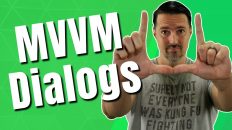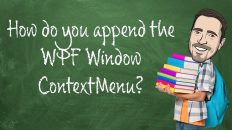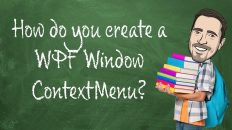Here is the sample code for last Thursday’s WPF Event Routing presentation.
I know I covered the subject fast, but I was in a hurry. I had to go to the airport. So here is a quick review.
Event Types:
- Direct events are like ordinary .NET events. They originate in one element and don’t pass to any other. For example, MouseEnter is a direct event.
- Bubbling events are events that travel up the containment hierarchy. For example, MouseDown is a bubbling event. It is raised first by the element that is clicked. Next, it is raised by that element’s parent, and then by that element’s parent, and so on, until WPF reaches the top of the element tree.
- Tunneling events are events that travel down the containment hierarchy. They give you the chance to preview (and possible stop) an event before it reaches the appropriate control. For example, PreviewKeyDown allows you to intercept a key press, first at the window level, and then in increasingly more specific containers until you reach the element that had focus when the key was pressed.
RoutedEventArgs Class:
- Source indicates what object raised the event.
- OriginalSource indicates what object originally raised the event. Usually the OriginalSource is the same a the Source. But in some cases they could be different. For example, if you click close to the border of a window, you will get a Window object for the Source but a Border object for the OriginalSource.
- RoutedEvent provides the RoutedEvent object for the event triggered by your event handler.
- Handled allows you to halt the event bubbling or tunneling process.
Here is a simple example of when you might use a bubbling event:
<StackPanel Hyperlink.Click="StackPanel_Click">
<TextBlock>
<Hyperlink NavigateUri="http://www.yahoo.com">Yahoo!</Hyperlink>
</TextBlock>
<TextBlock>
<Hyperlink NavigateUri="http://www.google.com">Google</Hyperlink>
</TextBlock>
<TextBlock>
<Hyperlink NavigateUri="http://www.msn.com">MSN</Hyperlink>
</TextBlock>
</StackPanel>
private void StackPanel_Click(object sender, RoutedEventArgs e)
{
Process.Start(((Hyperlink)e.Source).NavigateUri.ToString());
}
So instead of having to create an event handler for each hyperlink, or creating a single event handler and pointing each hyperlink to the same event handler, I can use one event handler on the parent element.



